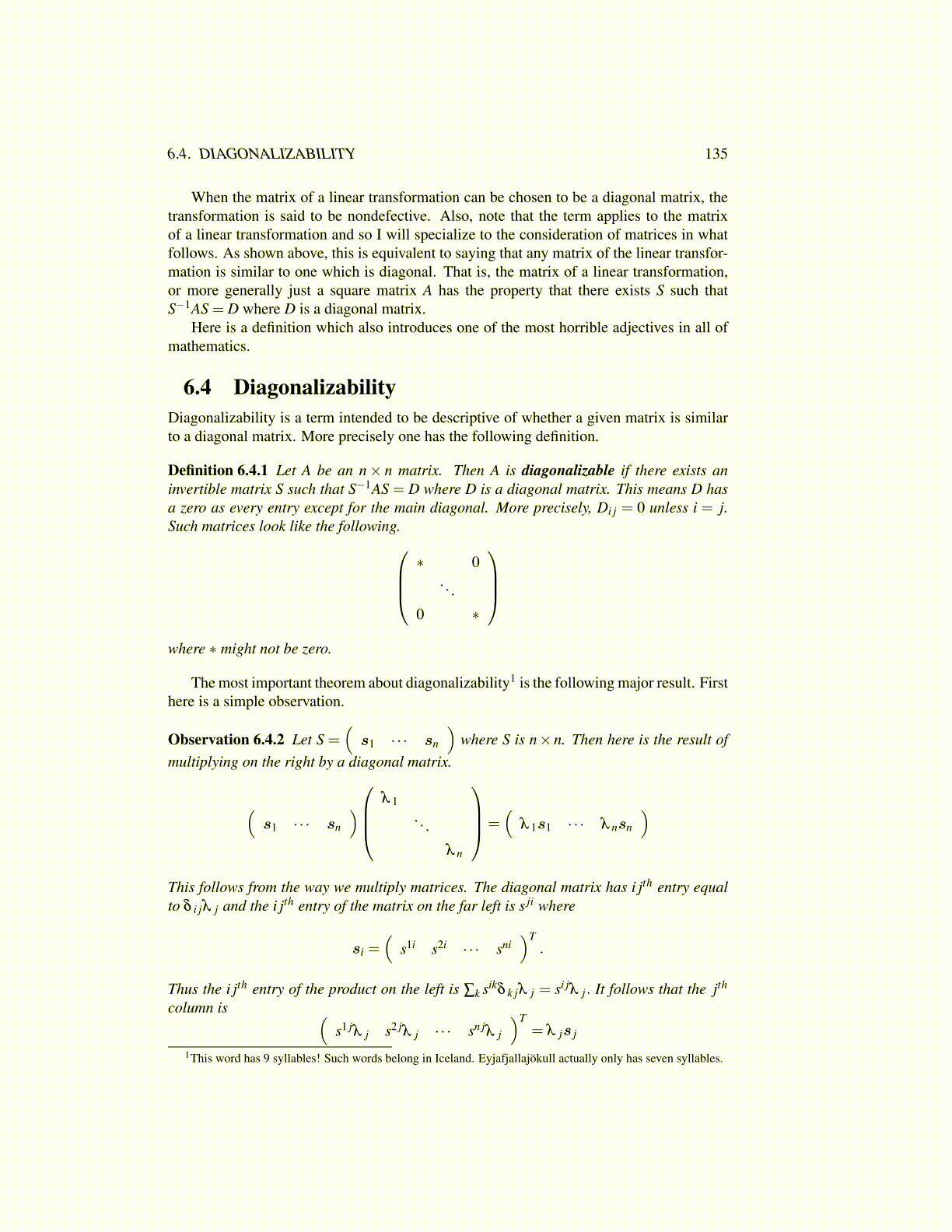
6.4. DIAGONALIZABILITY 135
When the matrix of a linear transformation can be chosen to be a diagonal matrix, thetransformation is said to be nondefective. Also, note that the term applies to the matrixof a linear transformation and so I will specialize to the consideration of matrices in whatfollows. As shown above, this is equivalent to saying that any matrix of the linear transfor-mation is similar to one which is diagonal. That is, the matrix of a linear transformation,or more generally just a square matrix A has the property that there exists S such thatS−1AS = D where D is a diagonal matrix.
Here is a definition which also introduces one of the most horrible adjectives in all ofmathematics.
6.4 DiagonalizabilityDiagonalizability is a term intended to be descriptive of whether a given matrix is similarto a diagonal matrix. More precisely one has the following definition.
Definition 6.4.1 Let A be an n× n matrix. Then A is diagonalizable if there exists aninvertible matrix S such that S−1AS = D where D is a diagonal matrix. This means D hasa zero as every entry except for the main diagonal. More precisely, Di j = 0 unless i = j.Such matrices look like the following.
∗ 0. . .
0 ∗
where ∗ might not be zero.
The most important theorem about diagonalizability1 is the following major result. Firsthere is a simple observation.
Observation 6.4.2 Let S =(
s1 · · · sn
)where S is n× n. Then here is the result of
multiplying on the right by a diagonal matrix.
(s1 · · · sn
)λ 1
. . .
λ n
=(
λ 1s1 · · · λ nsn
)
This follows from the way we multiply matrices. The diagonal matrix has i jth entry equalto δ i jλ j and the i jth entry of the matrix on the far left is s ji where
si =(
s1i s2i · · · sni)T
.
Thus the i jth entry of the product on the left is ∑k sikδ k jλ j = si jλ j. It follows that the jth
column is (s1 jλ j s2 jλ j · · · sn jλ j
)T= λ js j
1This word has 9 syllables! Such words belong in Iceland. Eyjafjallajökull actually only has seven syllables.